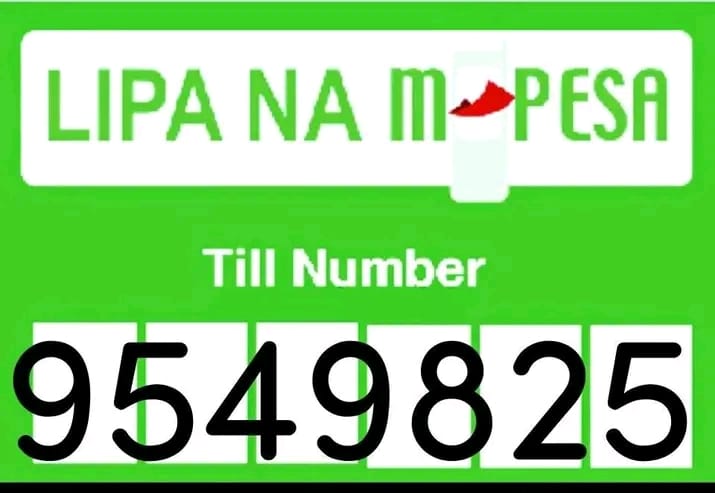
simply amazing, always for you.
The idea of investing in stocks often conjures images of Wall Street traders, six-figure brokerage accounts, and complex market jargon. But here’s the truth: you don’t need thousands of dollars to start building wealth through the stock market. In fact, with just $500 and a bit of know-how, you can take meaningful steps toward long-term financial freedom.

This guide will show you exactly how to invest in stocks with $500 — the smart way. We’ll break down where to invest, how to avoid common mistakes, and how to turn that modest sum into a powerful foundation for your future.
Why $500 Is Enough to Get Started
Many people mistakenly believe they need a lot of money to begin investing. That’s outdated thinking. Thanks to commission-free brokers, fractional share investing, and accessible educational resources, anyone with a few hundred dollars can participate in the market today.
Here’s why $500 is a great starting point:
- It forces you to learn by doing — without risking your life savings.
- You can access diversified investment products like ETFs.
- It teaches consistency: the best investors build wealth over time by adding to their portfolios regularly.
The bottom line: $500 won’t make you rich overnight, but it can absolutely put you on the path to long-term wealth.
Step 1: Clarify Your Investment Goals
Before you do anything with your money, take a moment to ask yourself a few important questions:
- What is this $500 for?
- When will I need the money?
- Am I investing for growth, income, or both?
- Can I handle market volatility?
These questions will shape the way you invest. For example, if you’re investing for retirement and have 20 or 30 years before you need the money, you can afford to take more risk. If you need the money in a few years, a more conservative approach may be appropriate.
Understanding your risk tolerance and investment horizon is essential. The last thing you want is to panic and sell your investments during a market dip because you didn’t anticipate the ups and downs.
Step 2: Choose a Brokerage Platform
This is where the rubber meets the road. You need a brokerage account to buy stocks, ETFs, and other investment products. Fortunately, there are several great options today that cater to small investors.

What to Look for in a Broker:
- No minimum deposit: Your $500 should be enough to get started.
- No commissions: Trading fees can eat into small accounts quickly.
- Fractional shares: These allow you to buy portions of expensive stocks (like Amazon or Google) with as little as $1.
- User-friendly interface: Especially if you’re new to investing.
- Strong customer service and educational tools: To help you learn as you go.
Top Brokerage Options for Beginners:
- Fidelity – Offers fractional shares, no account minimums, and a strong reputation.
- Charles Schwab – Known for “Stock Slices” (fractional shares), low fees, and robust research tools.
- Robinhood – Popular with beginners, user-friendly, and offers commission-free trading.
- SoFi Invest – A modern platform that emphasizes education and automatic investing.
- Public.com – Allows you to invest in fractions of stocks and ETFs while following other investors.
Once you’ve chosen your broker, setting up your account typically takes less than 10 minutes. You’ll need to provide some personal information for verification and then fund your account.
Step 3: Understand What You’re Investing In
The stock market isn’t just a casino for picking lucky numbers. It represents real ownership in real businesses. When you buy a stock, you become a shareholder — even if it’s just a fraction of a share.
Here are the basics you need to understand:
Stocks:
These represent shares of individual companies. When you buy Apple or Tesla stock, you own part of that business. Stocks can offer high growth potential but are more volatile.
ETFs (Exchange-Traded Funds):
An ETF is a bundle of investments you can buy and sell like a stock. Think of it as a basket of stocks that follows an index (like the S&P 500) or sector (like technology or healthcare). ETFs are great for diversification and lower risk.
Dividends:
Some companies share profits with their investors in the form of dividends. Reinvesting dividends can significantly boost your long-term returns.
Index Funds:
A type of ETF or mutual fund that tracks a specific index like the S&P 500 or total market. They’re ideal for long-term passive investing.
Understanding the difference between these options will help you build a strong, diversified portfolio with your $500.
Step 4: Build a Diversified Portfolio with $500
Now the real question: how should you invest your $500?
The key principle here is diversification — spreading your money across multiple investments to reduce risk. With a small budget, you won’t be able to buy dozens of individual stocks, but ETFs and fractional shares make diversification possible.
Here are three effective strategies for a $500 portfolio:
Strategy 1: All-In on a Broad Market ETF
If you want maximum simplicity and solid long-term growth, consider putting your entire $500 into a low-cost ETF that tracks the overall market.
Example ETFs:
- VTI (Vanguard Total Stock Market ETF) – Covers the entire U.S. stock market.
- VOO (Vanguard S&P 500 ETF) – Covers the 500 largest U.S. companies.
- ITOT (iShares Core S&P Total U.S. Stock Market ETF) – Another total market option.
Pros:
- Instant diversification
- Low fees
- Historically strong returns over the long term
Strategy 2: Balanced ETF Portfolio
Split your money across 2–3 ETFs for broader exposure.
Sample Portfolio:
- $200 in VTI (Total U.S. market)
- $150 in VXUS (International stocks)
- $150 in BND (U.S. bonds)
Pros:
- Exposure to both U.S. and international markets
- Some downside protection from bonds
- Better balance for medium-term investors
Strategy 3: Fractional Shares of Blue-Chip Stocks
If you’re interested in owning part of specific companies you believe in, use fractional shares.
Sample Portfolio:
- $100 in Apple (AAPL)
- $100 in Microsoft (MSFT)
- $100 in Tesla (TSLA)
- $100 in Google (GOOGL)
- $100 in Amazon (AMZN)
Pros:
- More engaging for investors who want to follow specific companies
- Potential for high growth
- Can combine with ETFs later
Cons:
- Less diversified
- Higher volatility
A combination of ETFs and fractional shares can also work well. For example, you might invest $300 in an ETF and $200 in 2-3 individual stocks.
Step 5: Use DRIP and Auto-Investing Tools
Once you’ve invested your $500, the work isn’t done. What you do next can dramatically impact your long-term results.
DRIP: Dividend Reinvestment Plans
Most brokers let you reinvest dividends automatically. This means instead of taking your earnings in cash, they go right back into buying more shares — helping you compound your growth over time.
Auto-Investing:
Many platforms allow you to set up automatic deposits. Even if it’s just $20 a week or $50 a month, consistently adding money helps grow your portfolio faster.
Consistency beats timing. Over time, regular investing through all market conditions tends to outperform those trying to time their entries.
Step 6: Keep Learning and Stay Patient
Investing is not a get-rich-quick game. It’s about buying quality assets and letting them grow over time. With just $500, your goal should be to build discipline and learn the market.
Resources for Continued Learning:
- Books:
- The Little Book of Common Sense Investing by John C. Bogle
- The Intelligent Investor by Benjamin Graham
- A Random Walk Down Wall Street by Burton Malkiel
- Websites:
- Investopedia
- Morningstar
- Motley Fool
- Podcasts:
- The Investor’s Podcast
- BiggerPockets Money
- Money for the Rest of Us
Mistakes to Avoid When Investing $500
- Trying to Time the Market:
Waiting for the “perfect moment” is a losing game. Time in the market beats timing the market. - Going All-In on a Trendy Stock:
Just because something is hyped doesn’t mean it’s a good investment. - Ignoring Fees:
Hidden costs can quietly eat into your gains. Always understand expense ratios and platform fees. - Overtrading:
Frequent buying and selling leads to higher taxes and lower returns. Stay the course. - Expecting Immediate Returns:
Stocks go up and down. If you’re investing $500 today, think about where it will be in 10 years — not 10 days.
How Your $500 Can Grow Over Time
Let’s take a look at how that $500 could perform in a diversified portfolio assuming a 7% annual return.
| Time Frame | Without Adding More | Adding $50/month |
|---|---|---|
| 1 Year | $535 | $1,162 |
| 5 Years | $701 | $3,573 |
| 10 Years | $983 | $7,634 |
| 20 Years | $1,934 | $20,989 |
| 30 Years | $3,806 | $47,603 |
These numbers don’t factor in taxes or inflation, but they illustrate the power of compounding and consistency. Your initial $500, while small, is just the spark.
Your $500 Is the Start of Something Bigger
Investing in stocks with $500 isn’t just possible — it’s wise. You don’t need to wait until you have a fortune. In fact, starting with what you have right now builds financial discipline, teaches valuable lessons, and opens the door to wealth-building habits that compound over time.
The sooner you start, the longer your money has to grow.
Even if you never invest a huge amount all at once, consistent monthly contributions — even $20 or $50 — combined with smart, diversified investments can turn modest beginnings into real wealth.
So open that brokerage account, choose a few solid investments, and get started. Your future self will thank you.

Support Our Website!
We appreciate your visit and hope you find our content valuable. If you’d like to support us further, please consider contributing through the TILL NUMBER: 9549825. Your support helps us keep delivering great content!
If you’d like to support Nabado from outside Kenya, we invite you to send your contributions through trusted third-party services such as Remitly, SendWave, or WorldRemit. These platforms are reliable and convenient for international money transfers.
Please use the following details when sending your support:
Phone Number: +254701838999
Recipient Name: Peterson Getuma Okemwa
We sincerely appreciate your generosity and support. Thank you for being part of this journey!
